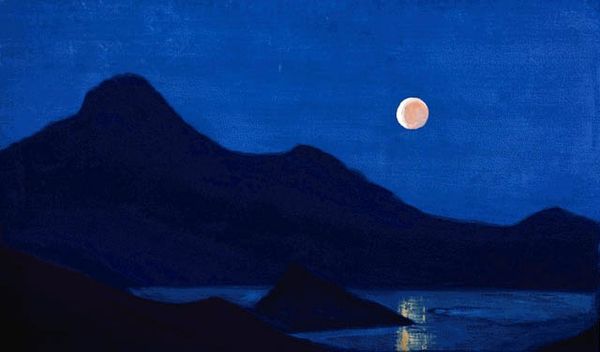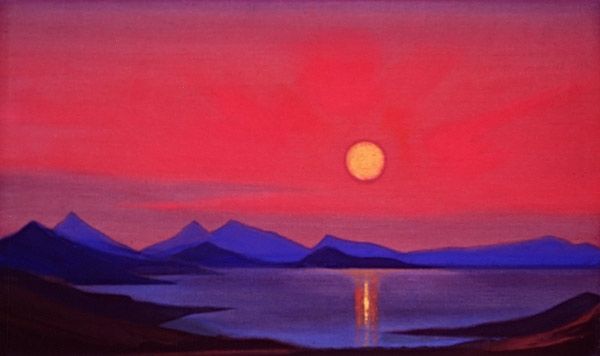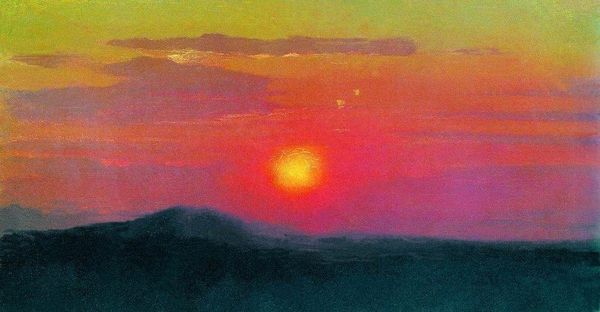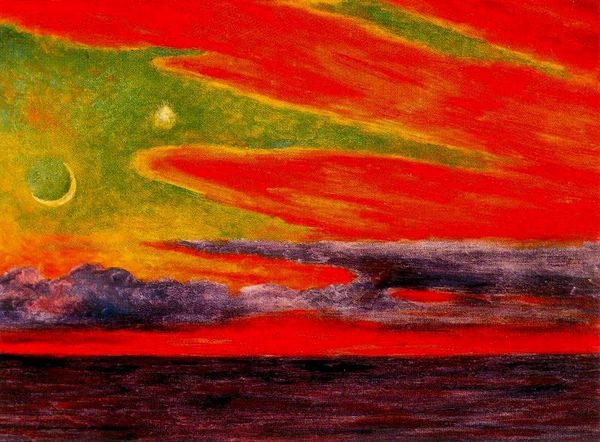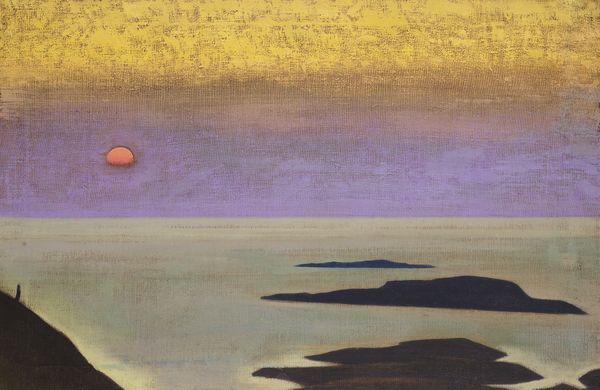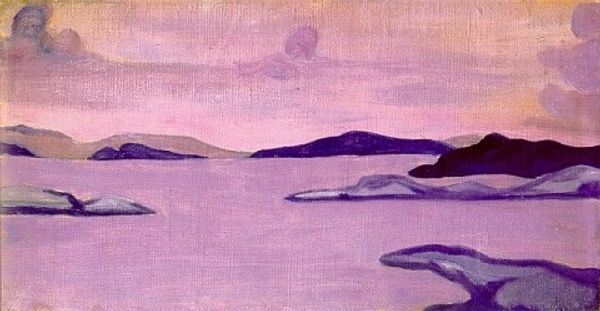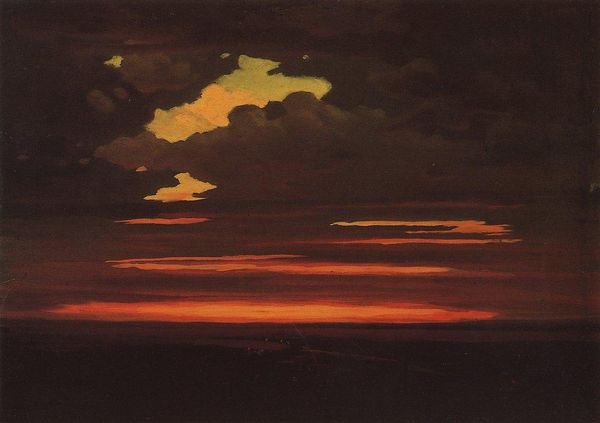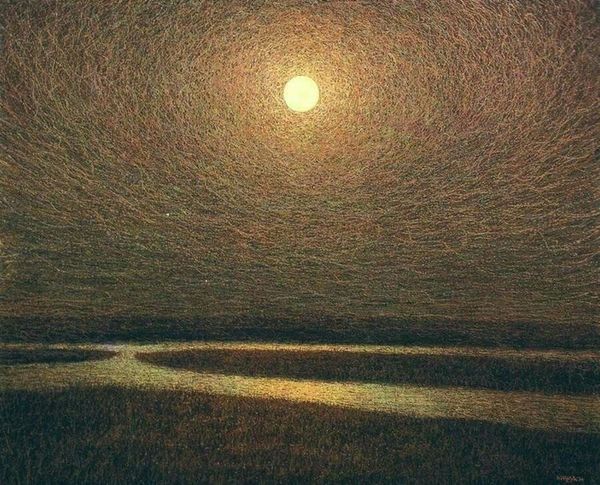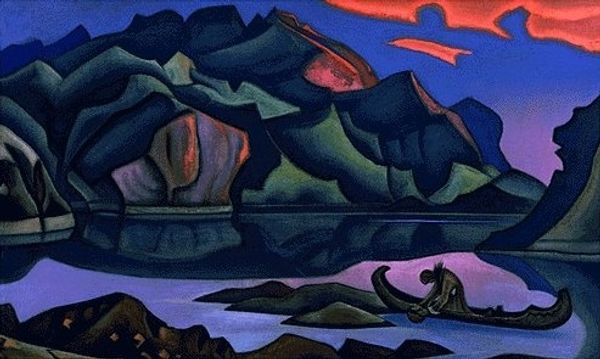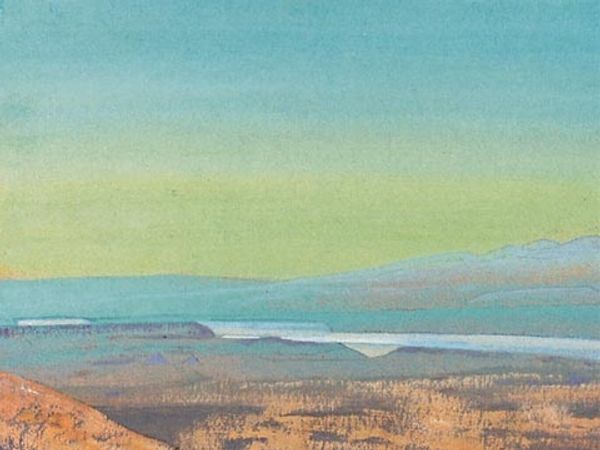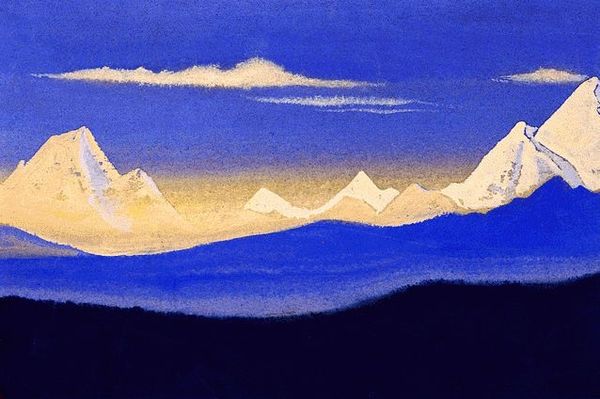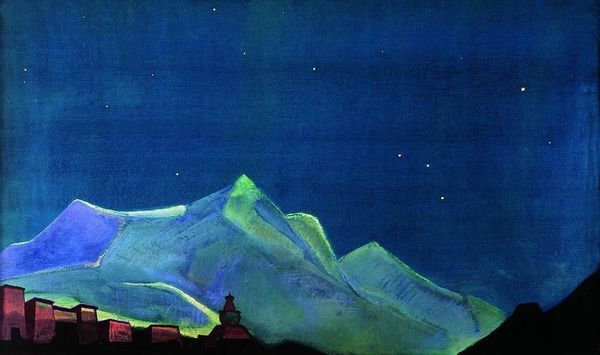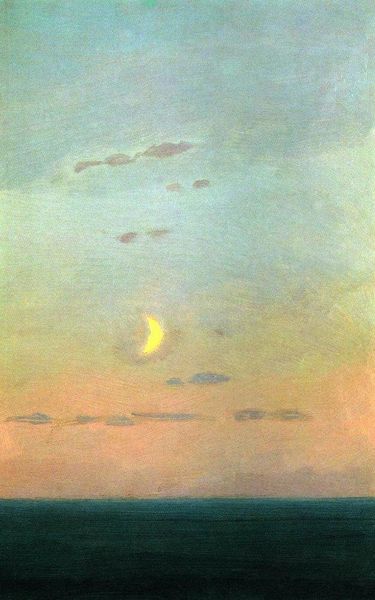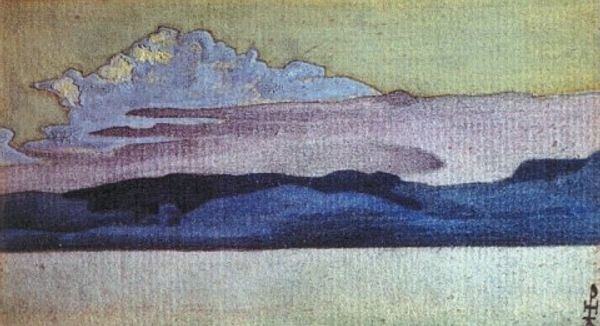
Copyright: Public domain
Curator: Nicholas Roerich's “Himalayas with Setting Moon,” painted in 1943, captures a seemingly quiet yet evocative moment. What are your initial thoughts on this landscape? Editor: It strikes me as both serene and unsettling. That luminous moon against the gradient of that bruised, reddish sky creates an undeniably captivating yet strange atmosphere. The Romanticism movement and the idea of sublime beauty gone awry maybe. Curator: Let’s delve deeper into the materiality and the making of this image. Roerich was, as you know, deeply immersed in the landscape. "Himalayas with Setting Moon" uses oil paints, possibly applied *en plein air,* though his practice involved memory-based work too. His brushstrokes aren't labored or hyperrealistic but the impasto certainly creates visual texture. What does the physicality of this work evoke in terms of artistic labor? Editor: It brings up Roerich’s complex relationship to nationalism and spiritualism. The Himalayas for Roerich and his followers represented a zone for mystical journeys. That golden light hitting the waters appears less a gentle touch than a sort of sublime manifestation. Roerich clearly saw landscape and nature as something more than surface impressions. I’m reminded of how figures like Blavatsky promoted esoteric views on Tibet—ones with troubling legacies on orientalist perspectives in Europe. Curator: Certainly. From a materialist view, this relates to the consumption of art that promotes ideas and ideologies. Here, Roerich wasn't simply capturing a scene; his travels and engagement with theosophy shaped what he put on canvas. His technique – the broad, expressive brushwork - facilitated the transmission of this loaded landscape painting. I’d argue the application method helps further ideas central to spiritualism. Editor: Right, because if the labor were highly visible it may come across as less an "instant," and instead a painstakingly built manifestation of spiritual insight. Curator: Yes, in his time Roerich saw painting as work in service to promoting a philosophy of universal unity. Now, knowing the details of its execution, it's fair to say the legacy surrounding his paintings warrants further interrogation. Editor: Precisely. As compelling as this work is aesthetically, we can’t ignore the web of meaning around its production. These works force us to question how even a tranquil scene contains historical narratives embedded in the oil paint. Curator: A crucial point to remember.
Comments
No comments
Be the first to comment and join the conversation on the ultimate creative platform.
